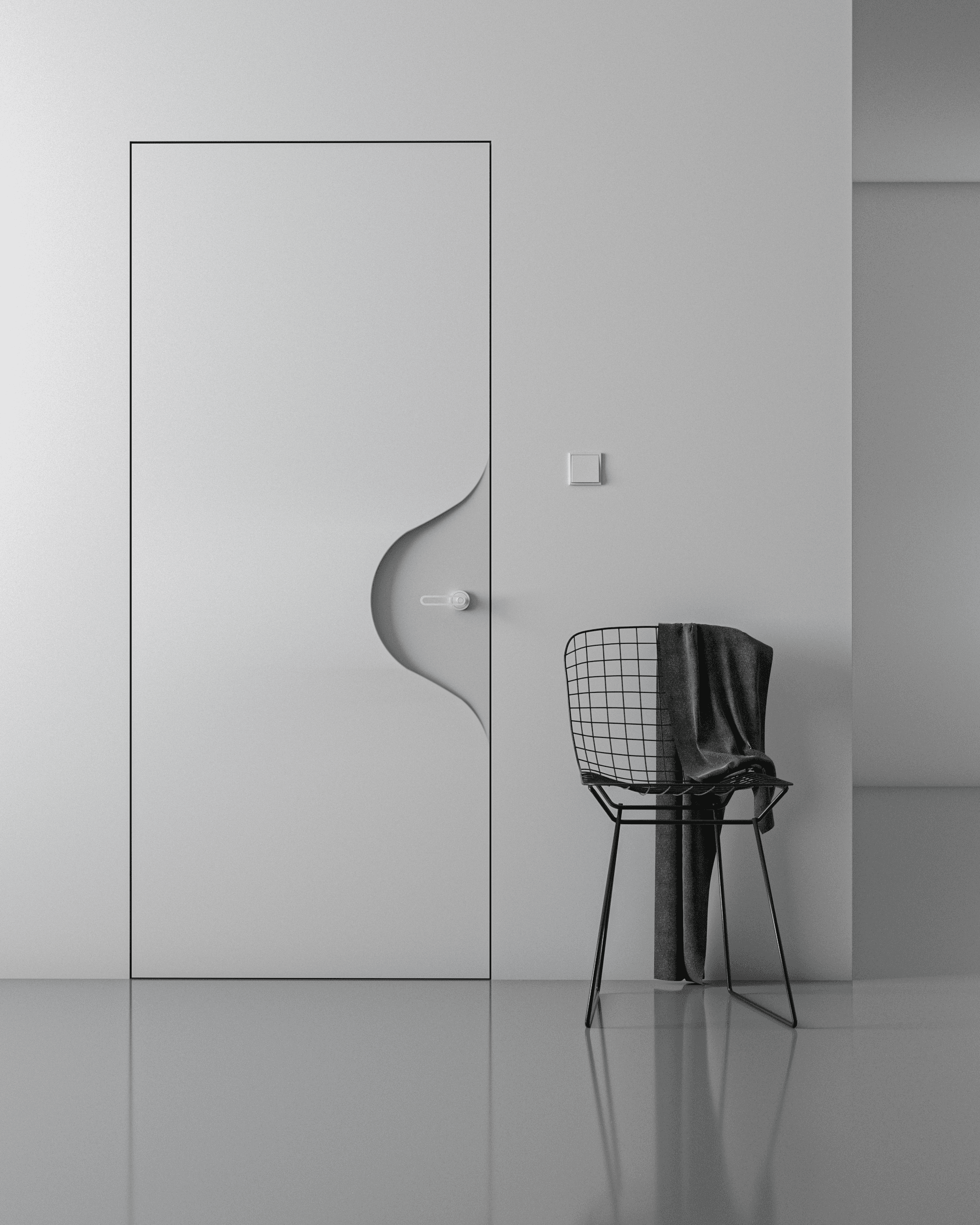


A simple prayer app
A simple prayer app
Overview
— Sütre is an award-winning design entitled as runner-up in the student design competition established by a door company (Artella), under the theme of sustainability (2019).
Let’s firstly listen to this memory of my childhood,
In my grandmother’s house, there is a room
In where she stocks what she buys from the bazaar...
But this room does not have a door...
And she can not afford to buy a new door.
Then I see my uncle,
He hammers three nails to the wall; then hangs a white curtain.
Such a door that it has neither a handle nor a case,
Was both simple and modest.
Here is a design idea that solves the problem.
An idea that is actually a tradition;
And many more like my grandmother,
Hangs a curtain to rooms without doors.
This must have been a “sustainability” back then;
Making shift with what you have.
You listen to the story of this design,
Let this door be dedicated to my precious grandmother..
A curtain that turns into a door for a room without a door.
Gives an inspiration and becomes; “Sütre”.
— Sütre was inspired by a tradition from a childhood’s memory; an effective, simple, sustainable solution of Anatolian people using hung curtains for doorways at their home. It is designed to preserve this tradition alive today.
Hung curtain on the doorway has a cognizance that shows the door-wall relationship holistically and it reflects simplicity and modesty. When entering a room with a curtain, people instinctively reach out to push it aside, and Sütre mimics this interaction by shaping the door with a curved form that resembles the outline of a curtain. This form is divided into two parts: one abstracted from the curtain itself, while the second emphasizes the "handle" area.
Materials Used: The door uses bioplastic sourced from natural product waste. Wood is incorporated, as wood is a common material in traditional doors. Additionally, phosphorescent tape is applied, illuminating part of the door in the dark for ease of access.
Sustainable Features: The door can be updated or redecorated to match the room’s decor. The bioplastic part is renewable, while the design itself incorporates replaceable sections for longevity.
Functional Highlights: The design includes phosphorescent tape to help locate the handle in the dark without excessive use of artificial light. This design also emphasizes the organic look and feel of traditional doors, with a focus on sustainability.
‘The door’, by opening and closing;
both separated the spaces from each other
and connected them to each other:
With this design; it built a bridge to the past,
Connected to tradition and reached to its future..
— Sütre is an award-winning design entitled as runner-up in the student design competition established by a door company (Artella), under the theme of sustainability (2019).
Let’s firstly listen to this memory of my childhood,
In my grandmother’s house, there is a room
In where she stocks what she buys from the bazaar...
But this room does not have a door...
And she can not afford to buy a new door.
Then I see my uncle,
He hammers three nails to the wall; then hangs a white curtain.
Such a door that it has neither a handle nor a case,
Was both simple and modest.
Here is a design idea that solves the problem.
An idea that is actually a tradition;
And many more like my grandmother,
Hangs a curtain to rooms without doors.
This must have been a “sustainability” back then;
Making shift with what you have.
You listen to the story of this design,
Let this door be dedicated to my precious grandmother..
A curtain that turns into a door for a room without a door.
Gives an inspiration and becomes; “Sütre”.
— Sütre was inspired by a tradition from a childhood’s memory; an effective, simple, sustainable solution of Anatolian people using hung curtains for doorways at their home. It is designed to preserve this tradition alive today.
Hung curtain on the doorway has a cognizance that shows the door-wall relationship holistically and it reflects simplicity and modesty. When entering a room with a curtain, people instinctively reach out to push it aside, and Sütre mimics this interaction by shaping the door with a curved form that resembles the outline of a curtain. This form is divided into two parts: one abstracted from the curtain itself, while the second emphasizes the "handle" area.
Materials Used: The door uses bioplastic sourced from natural product waste. Wood is incorporated, as wood is a common material in traditional doors. Additionally, phosphorescent tape is applied, illuminating part of the door in the dark for ease of access.
Sustainable Features: The door can be updated or redecorated to match the room’s decor. The bioplastic part is renewable, while the design itself incorporates replaceable sections for longevity.
Functional Highlights: The design includes phosphorescent tape to help locate the handle in the dark without excessive use of artificial light. This design also emphasizes the organic look and feel of traditional doors, with a focus on sustainability.
‘The door’, by opening and closing;
both separated the spaces from each other
and connected them to each other:
With this design; it built a bridge to the past,
Connected to tradition and reached to its future..











